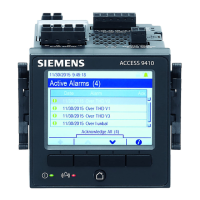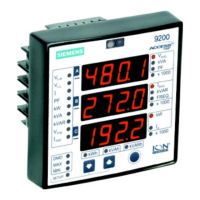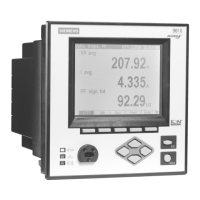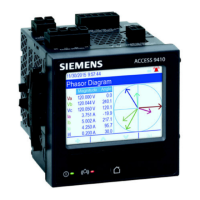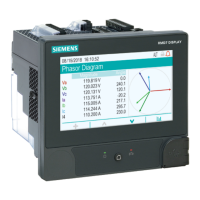9410 series Communications
1. Open a web browser and enter your meter’s IP address in the address box.
The webpage login is displayed.
2. Enter your login credentials.
3. Navigate to Setup > Ethernet.
4. Click Advanced Settings at the bottom of the screen.
5. Select YES or NO to enable or disable each configurable protocol.
6. Enter the port number for each configurable protocol.
7. Click Apply to send these settings to your meter.
Serial communications
The meter supports serial communication through the RS-485 port.
In an RS-485 network, there is one master device, typically an Ethernet to RS-485
gateway. It provides the means for RS-485 communications with multiple slave
devices (for example, meters). For applications that require only one dedicated
computer to communicate with the slave devices, a USB to RS-485 converter can be
used to connect to the master device.
Up to 32 devices can be connected on a single RS-485 bus.
RS-485 configuration
Before connecting your device to the RS-485 bus, use the meter’s display, webpages
or ION Setup to configure your meter’s default RS-485 settings.
Your meter has one RS-485 connection.
Your meter must have a unique unit identifier (address) and have the following settings
match the rest of the devices on the RS-485 bus:
• Protocol
• Baud rate
• Parity and stop bits
You can configure the following settings to help optimize communications
performance:
• RTS delay
• RS-485 bias
You can use a communications converter (USB to RS-485 or RS-232 to RS-485) or an
Ethernet gateway device to connect to your meter.
Serial protocols and ports
Your meter supports serial communications protocols on its RS-485 port.
• ION
• Modbus RTU
• Modbus Master
• DNP 3.0
• EtherGate
• GPS: Truetime/Datum (this protocol setting is for connecting to a GPS receiver
communicating in serial ASCII format)
66 7EN05-0336-03
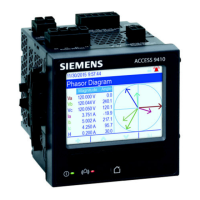
